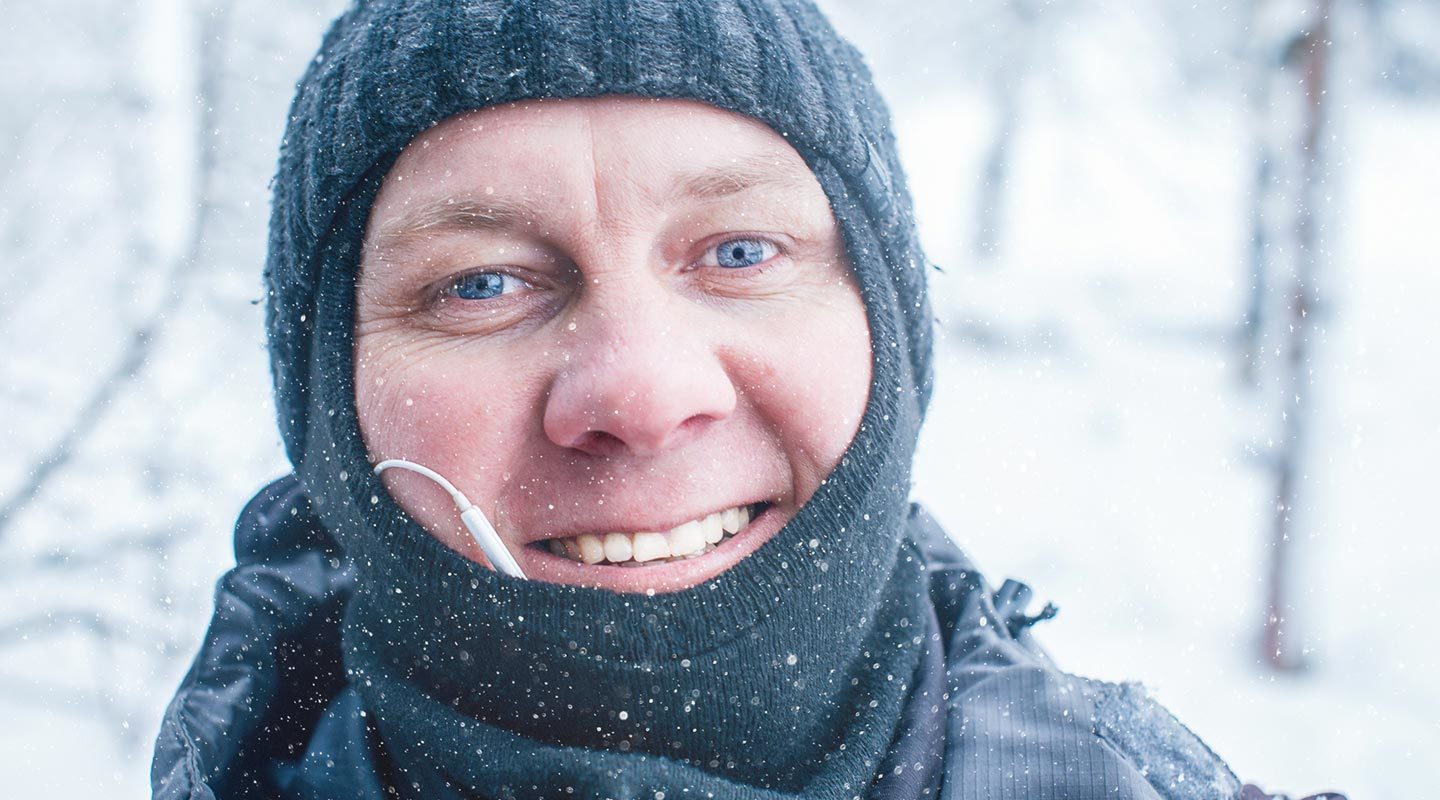After making the autumn transition, you might think you’re all set.
But to ready yourself up for some truly unforgettable long hikes this winter, there’s plenty more to think about. As temperatures dip, you need to change what you’re wearing out on the trail. Otherwise you could find yourself feeling a bit frosty.
So, check out our quick and easy guide to becoming a warmer winter walker…
Layer, layer, layer
Relying on one coat to get you through your 2017/18 winter hikes? Think again.
No matter how pillowy and snug your coat is, insulation 101 dictates that lots of smaller layers trump one larger coat every time. By wearing multiple, thinner layers you’ll better trap and maintain your body heat.
Fleeces, jumpers and long johns are great for this as their lightweight, thermal qualities conserve pockets of warm air between each layer. They’re also much easier to fold away and fit in your rucksack, so if you get too hot you can also remove layers — and you can also afford to carry extra layers in case of a cold snap during your walk.
Depending on the conditions, it’s recommended you have at least 3 layers on your person at any one time.
Channel your inner onion.

Choose the right materials
It sounds counter-intuitive, but if you’re wearing enough layers in the cold and exerting enough energy on your hike, you’re actually likely to break a sweat.
In most circumstances this wouldn’t be a big deal. But perspiration during winter hikes can fast become a problem. As sweat dries, it rapidly lowers your body temperature — the exact opposite of what you want to happen.
By making sure you choose clothing materials that wick away moisture (draw it away from the skin), you can avoid unwanted chills. Anything made from bamboo pulp or synthetic materials such as nylon are great for this.
Leave clothes made from natural materials such as cotton and silk at home and check out this easy listening explanation of the thinking behind moisture wicking…
Be ready for the heavens to open
The winter months are wonderfully unpredictable. So, it’s important to expect the worst and make sure all bases are covered. Even if the forecast says blue skies and sunshine, always (and we mean always) pack a waterproof jacket.
Better safe than sorry may seem like an over-used adage, but in this scenario it’s more true than ever. Sudden downpours can do more than ruin your hair when the thermometer is reading single figures outside.
Wearing wet clothes for a prolonged period of time in rock-bottom temperatures can accelerate the symptoms of cold temperature exposure, putting you at real risk. Whether it’s rain, snow or sleet, make sure you’re ready.

Be sure to get the right shoes
Your feet need protection all year round. However, during the winter you face different challenges. Staying dry is vital, as we already know. Added insulation is also a massive pro when you invest in winter hiking footwear.
Columbia’s Canuk hiking boot uses a visible, durable waterproof membrane to prevent any moisture entering the shoe. Its innovative technology like this that can make all the difference in wet, cold, or even sub-zero conditions.
It’s also important to bear in mind that bulky, clunky footwear can impede your hiking experience. The key is finding a shoe that balances a lightweight feel with the snug, protective fit we’ve all become accustomed to in winter boots.
READ MORE:
- Bucket list hiking trails in Europe (and where to find them)
- The hiker’s guide to EPIC European adventures [Interactive map]
- Foot aware: Columbia Canuk Titanium Omni-Heat OutDry Extreme
Buy suitable socks
It only makes sense to pair your hiking boots with the right pair of socks!
Socks made from a mixture of Merino wool and nylon are often recommended as the best choice due to their hybrid qualities.
The durable, synthetic nylon component helps to ensure the socks remain intact and odour-free, while the natural fabric of the wool is breathable and traps warmth in wet conditions, when other materials would fall short.
It’s the perfect combination.

Scarves and balaclavas do more than you think
Your head is the part of your body most exposed to the elements. Thick wooly hats offer much needed insulation – and protect your ears from that achy sensation too.
But what other options have you got?
Scarves and balaclavas are not only effective at shielding your face from cold blasts of wind, they also help to contain the warmth from your breath and keep you dry in rainy conditions.
By wrapping your face up you get total protection from the cold, and added insulation that works to warm the rest of your body in the process.

Bonus: Hand warmers are your secret weapon
Gloves are a must for hikers out on long winter hikes. Cold hands equal either bitter sting or all out numbness. Both can only be bad news. Pain or loss of feeling are not just an inconvenience. If you find yourself in an emergency you’re going to struggle to operate efficiently.
But there’s also a secret weapon you can call upon. Hand warmers.
Available in both electric and packet form, these little portals of warmth are total lifesavers.
Stay warm, stay on top form
This is all simple, yet extremely vital advice.
Keeping yourself warm isn’t a luxury. It helps to ensure you stay healthy and alert in conditions that can turn on you without a moment’s notice.
Waterproofing is also absolutely key. Along with waterproof gear, you need to find breathable clothing that maintains ventilation, allowing sweat and rain to evaporate.
The most important thing to remember is to be ready for everything. It sounds odd, but by preparing for the worst, you can get the best out of your hikes this winter.

